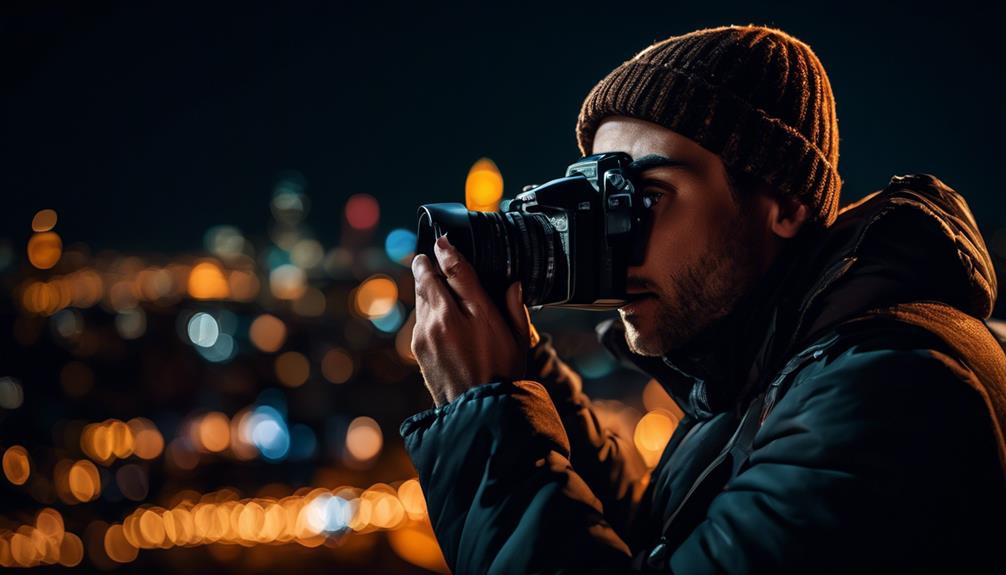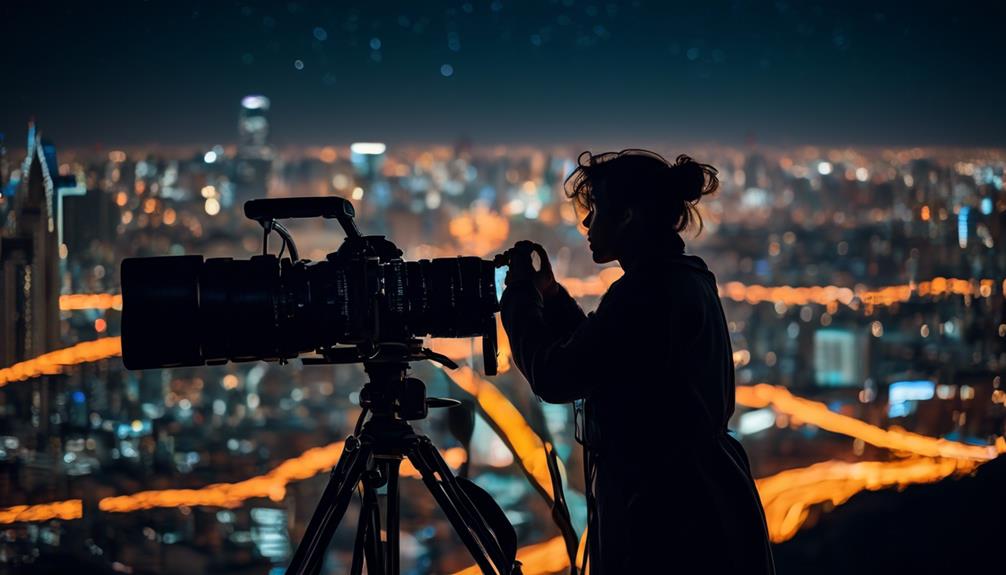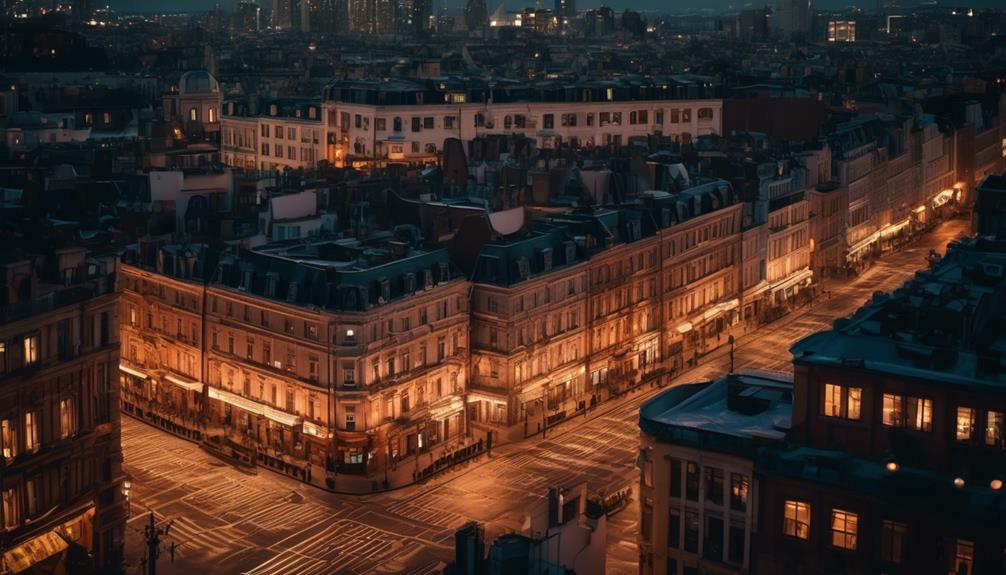Please note this post may contain affiliate links picked by me (Jay) that I have deemed may be of interest or relevant to you the reader of this.
These links do not affect the cost of the thing if you decide to purchase but i may get a little money if you choose to purchase.
For more information on my affiliate link policy click here.
Imagine standing at the edge of a city, its towering skyline illuminated against the night sky. As a beginner photographer, this captivating scene presents a perfect opportunity to delve into the world of night and low-light photography.
But why should you start? Well, let me share with you the countless reasons why this genre can truly elevate your skills and ignite your creativity.
From the technical challenges that will push you to learn new techniques, to the artistic possibilities that arise in the darkness, night and low-light photography offers a unique and rewarding experience that will leave you wanting more.
So, if you're ready to unlock a whole new realm of visual storytelling, let's dive in and explore the wonders of capturing light in the dark.
Key Takeaways
- Night photography offers a unique perspective on cityscapes and creates vibrant, dynamic scenes.
- It allows for capturing astrophotography, including star trails, the Milky Way, and the Aurora Borealis.
- Techniques such as adjusting ISO settings, using a tripod, and creatively utilizing available light can enhance low-light photography.
- Mastering long exposures and experimenting with different compositions and angles can lead to creative opportunities in low-light environments.
Benefits of Night Photography
Night photography offers a captivating and unique experience, allowing photographers to capture stunning images with a touch of mystery and intrigue. One of the major benefits of venturing into nighttime urban exploration is the opportunity to capture the city in a whole new light (pun intended). When the sun goes down, the cityscape transforms into a dazzling display of lights, creating a vibrant and dynamic scene that's perfect for capturing striking images. The contrasting shadows and the way artificial lights interact with the surrounding environment add depth and drama to your compositions.
Moreover, night photography opens up a whole new realm of astrophotography opportunities. With the right techniques and equipment, you can capture the beauty of the night sky, including star trails, the Milky Way, and even the elusive Aurora Borealis. To achieve stunning astrophotography results, consider using a wide-angle lens with a low aperture to capture as much light as possible, and a sturdy tripod to keep your camera steady during long exposure shots.
Techniques for Low-Light Photography
To capture stunning low-light photographs, it's essential to master various techniques that will enhance the quality and creativity of your images. Whether you're interested in low light portrait photography or capturing the vibrant energy of street photography at night, these techniques will help you achieve remarkable results.
Firstly, understanding your camera's settings is crucial. Experiment with different ISO settings to find the perfect balance between minimizing noise and capturing enough light. Adjusting the aperture can also help control the depth of field, allowing you to focus on specific elements in your composition.
Next, consider using a tripod to stabilize your camera. This will enable you to take longer exposures without worrying about camera shake. Additionally, using a remote shutter release or the timer function on your camera can further minimize any movement.
Another technique to consider is using available light creatively. Look for interesting light sources such as street lamps, neon signs, or even the moon, and use them to add depth and atmosphere to your images. Experiment with different angles and perspectives to create unique compositions.
Lastly, post-processing can play a significant role in enhancing your low-light photographs. Use editing software to adjust exposure, contrast, and noise reduction. This will help you bring out the details and colors that may have been lost in the low-light conditions.
Equipment for Capturing the Night Sky
When it comes to capturing the mesmerizing beauty of the night sky, having the right equipment is essential. Night sky photography, also known as astrophotography, requires specialized gear that can handle low-light conditions and capture the stunning details of celestial objects. With the advancements in technology, there are now several innovative options available to beginner photographers who want to explore this fascinating genre.
To help you get started, here are three key pieces of astrophotography gear that you should consider:
| Equipment | Description | Benefits |
|————————|————————————————————–|—————————————————————|
| DSLR or Mirrorless Camera | These cameras offer manual controls and interchangeable lenses, allowing you to adjust settings and experiment with different focal lengths. | • High image quality
• Versatility
• Compatibility with various lenses |
| Sturdy Tripod | A stable tripod is essential for long exposure shots, as it prevents camera shake and ensures sharp images. | • Stability
• Easy adjustments
• Lightweight and portable |
| Wide-Angle Lens | A wide-angle lens allows you to capture a larger portion of the night sky, providing a more immersive experience. | • Capturing a wider field of view
• Ideal for landscape astrophotography
• Enhanced detail and sharpness |
Investing in these essential tools will greatly enhance your night sky photography experience. Remember to experiment, be patient, and embrace the challenge of capturing the wonders of the universe. So grab your gear, head out into the night, and let your creativity shine under the stars!
Tips for Mastering Long Exposures
Mastering long exposures in night and low-light photography requires a combination of technique, practice, and a dash of creativity. One key element to focus on is mastering shutter speed. By controlling the length of time your camera's shutter is open, you can create stunning effects in your photographs. For long exposures, a slower shutter speed is often used to capture the movement of light trails and create a sense of motion in your images.
To start, set your camera to Manual mode and select a low ISO setting to reduce noise. Next, experiment with different shutter speeds, ranging from a few seconds to several minutes, to see how the light trails change. Keep in mind that the longer the exposure, the more light will be captured, so be mindful of overexposure.
To capture light trails effectively, find a location with moving sources of light, such as cars on a highway or people walking with flashlights. Use a tripod or stable surface to keep your camera steady during the long exposure. Experiment with different compositions and angles to add a creative touch to your photographs.
Mastering long exposures takes time and practice, but the results can be truly breathtaking. So, grab your camera, get out there, and let your creativity shine through your mastery of shutter speed and capturing mesmerizing light trails.
Creative Opportunities in Low-Light Environments
Now that we've explored the techniques for mastering long exposures in night and low-light photography, let's uncover the incredible creative opportunities that await in these captivating low-light environments.
One of the most exciting aspects of shooting in low-light is the chance to experiment with lighting. In these conditions, you have the freedom to play with different light sources and create unique and visually stunning effects. Whether it's using flashlights, LED lights, or even sparklers, the possibilities are endless. You can paint with light, create light trails, or illuminate specific subjects to add a touch of magic to your images.
Another fantastic creative opportunity that low-light photography presents is capturing urban nightlife. Cities come alive at night, with vibrant lights, bustling streets, and a sense of energy that's unmatched during the day. By venturing out into the city at night, you can capture the essence of urban life in a way that's dynamic and visually striking. From the neon signs and street performers to the movement of cars and people, there are endless opportunities to capture unique and captivating images.
Frequently Asked Questions
How Can I Minimize Noise in My Night and Low-Light Photographs?
To minimize noise in my night and low-light photographs, I first ensure my camera settings are optimized.
I use a lower ISO setting to reduce digital noise and a wider aperture to let in more light.
Additionally, I experiment with long exposure techniques, such as using a tripod and adjusting the shutter speed, to capture more details and minimize noise.
These techniques allow me to create stunning, noise-free images even in challenging lighting conditions.
Are There Any Specific Camera Settings That I Should Use for Night Photography?
When it comes to night photography, using specific camera settings is crucial for capturing those stunning shots. By adjusting your ISO, aperture, and shutter speed, you can optimize your camera for low-light conditions.
Lowering your ISO helps reduce noise, while using a wide aperture allows more light to enter the lens. Experimenting with longer shutter speeds can create beautiful light trails or capture the night sky.
These tips for night photography will help you capture the magic of the night with your camera.
What Are Some Common Challenges Faced When Shooting in Low-Light Conditions?
When shooting in low-light conditions, there are some common challenges that you may face. One of the main challenges is getting enough light into your camera to capture a properly exposed image. This can be overcome by using a wide aperture, increasing the ISO, and using longer shutter speeds.
Additionally, it's important to choose the right camera gear for night photography, such as a camera with good low-light performance and a fast lens. These tips will help you capture stunning shots in low-light situations.
Are There Any Post-Processing Techniques That Can Enhance My Night and Low-Light Photographs?
Are there any post-processing techniques that can enhance my night and low-light photographs?
Absolutely! When it comes to capturing those mesmerizing nighttime scenes, the magic doesn't stop after you click the shutter. With the right editing techniques, you can take your images from good to jaw-dropping.
From adjusting exposure and contrast to playing with shadows and highlights, post-processing allows you to bring out the hidden beauty of your night photography.
How Can I Effectively Use Artificial Lighting in My Night and Low-Light Photography?
When it comes to night and low-light photography, effectively using artificial lighting can make all the difference in capturing stunning images.
By experimenting with creative lighting techniques, such as using flash or external lights, you can add depth and drama to your photographs.
Don't be afraid to play with shadows and highlights to enhance the mood and atmosphere of your low-light scenes.
With a little practice and experimentation, you'll be able to create truly innovative and captivating night photos.
Conclusion
In conclusion, starting night and low-light photography as a beginner can be an exciting journey filled with endless possibilities.
By exploring the benefits of capturing the night sky, learning techniques for low-light photography, and investing in the right equipment, you can unlock a world of creative opportunities.
Just like a painter with a blank canvas, the night becomes your masterpiece, allowing you to paint with light and create stunning images that are as captivating as a symphony in the darkness.


